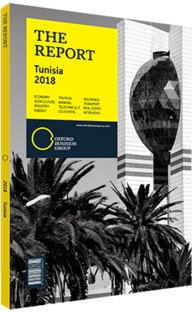Youssef Chahed, Head of Government: Interview

Interview: Youssef Chahed
How can Tunisia secure a 5% GDP growth rate?
YOUSSEF CHAHED: From the revolution to 2016, Tunisia’s GDP growth averaged 1% per year. In 2017 we increased this to above 2%, and we expect 3% in 2018 and 5% by 2020. To achieve this, we need to relaunch the three main growth drivers: investment, exports and production. In 2017 investments increased by 11% on 2016, and we aim to further target foreign investment. For this, we enacted an investment law and the tax incentives code in April 2017, two important regulations to boost investment. The new law on public-private partnerships (PPPs) is another opportunity to increase investment.
Exports, the second growth driver, rose by 18% in 2017, though there is still room for improvement. We established the National Council for Exports to promote further growth. We aim to achieve TD50m, (€19.2m) in exports by 2020, which is TD15m (€5.8m) more than we export today. The increase in exports will also improve the value of the dinar against foreign currencies.
Various strikes have caused hydrocarbons and phosphate exploitation to be halted. Although phosphate production rose by 21% in 2017, this is still well below full potential. Our goal is not only to secure a 5% GDP growth rate, but also to ensure sustainable growth that boosts employment and development. A 1% growth rate creates around 16,000 new jobs: 6000 for university graduates and 10,000 for non-university graduates. We must change the growth model so that even slow growth creates more jobs, especially for graduates.
What other measures will revise public finances?
CHAHED: Balancing public finances is central to economic growth. Although the deficit has been increasing since 2011, in 2018 we are targeting a deficit rate of 4.9% and 3% by 2020, which motivated the 2018 Finance Law. The law includes a one percentage point increase in value-added tax, which will allow us to reduce public debt for the first time in seven years. In 2018 we expect to reduce external debt by 12% from the 2017 rate.
We also need to decrease the public wage bill, which represents around 40% of the budget. After the revolution the government needed to hire many public workers, so this employment now accounts for 14% of GDP, which we aim to lower to at least 12.5% by 2020. To this end, we have implemented voluntary and negotiated retirement, which incentivise public sector workers to retire sooner. We are also working to revise the social security system, public administration and banking.
Which sectors are set to see increased investment?
CHAHED: Unlike its hydrocarbons-dependent neighbours, Tunisia’s economy is highly diversified, which offers opportunities for investment. There is significant investment potential in renewable energies, such as wind and solar. We also expect agriculture and tourism to attract investment in the short term. Tunisia has historically been agricultural, and in 2017 the sector increased output, but there are still unexploited lands with potential for development, which the government is working to make available to private investors.
Tourism also made a comeback in 2017, as we welcomed more than 7m visitors, with revenue increasing by 20%. To sustain this growth, we need to further develop infrastructure, particularly in the high-end tourism segment. Another sector with enormous investment potential is IT. The economy needs to digitalise, and the country has a large pool of highly qualified workers and engineers to build an IT ecosystem. Many domestic IT start-ups have already seen international success, and we see this sector growing in the future.
The authorities are an important investor in the economy via the annual budget. In 2017 the government invested TD7.7bn (€3bn) in projects. However, we are pushing for increased private sector investment through the new PPP law. Lastly, we are targeting international investment, and the Tunisia 2020 Conference was an important step to help establish the country’s reputation as an attractive investment destination.
You have reached the limit of premium articles you can view for free.
Choose from the options below to purchase print or digital editions of our Reports. You can also purchase a website subscription giving you unlimited access to all of our Reports online for 12 months.
If you have already purchased this Report or have a website subscription, please login to continue.

